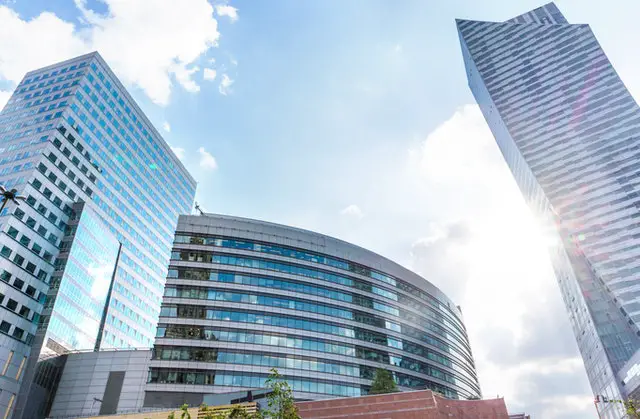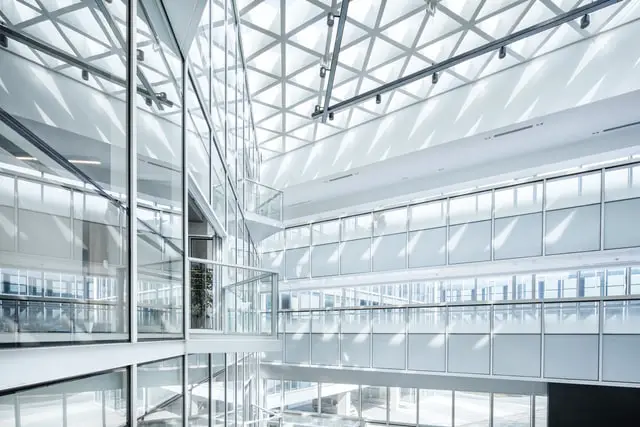Many investors would jump at any opportunity to Add value to commercial properties in their portfolio. However, the increase in the value of the properties must be enough to justify investing more money. The question investors must ask themselves is whether the opportunity cost of the upgrade will leave a sour taste in their mouths.
How to Add Value to Commercial Properties?
There are numerous methods of how to add value to commercial properties. The three main categories are: cosmetic and structural changes, reducing expenses, and increasing revenue. Reconfiguring space, improving the overall look, improving security, and modernizing the property can be ways to add value to your commercial properties.

Factors Pushing Developers to Add Value to Commercial Properties
The commercial property market is constantly shifting. The changing needs of modern companies often drive these changes. Commercial real estate developers and investors inevitably have to adapt to the growing demands of customers to stave off the competition. The following are the reasons that necessitate value addition to commercial properties.
- Customers have different spatial requirements. Therefore, the owner often has to change the layout when a long-term tenant leaves a property. For instance, open floor plans are fashionable today but weren’t a decade ago. Demand for open workspaces might compel investors to add value to commercial properties by breaking down divider walls.
- Smart buildings are on the rise. Unfortunately, older buildings did not include any ‘intelligent’ features. But, many people are embracing IoT devices and smart building technology. Faced with the risk of losing potential customers, investors add value to commercial properties that are more than a decade old.
- The green revolution is forcing many property owners to renovate their older buildings to be more environmentally friendly. Modifications such as adding solar panels, updating insulation, triple-glazed window panes, LED lights, and non-toxic paints are becoming harder to avoid.
- Deterioration is unavoidable: You might ignore a slight wallpaper peeling, a few stains on drop-ceiling tiles, and faded paint for a while. However, the combined deterioration of properties gradually diminishes their value until you must renovate the building. The best way to manage a property is to prevent it from disrepair.
- Improve client appeal: Customers can tell if a building has not had any work done on it for decades. Clients who feel you have neglected your property will question your priorities and be irritated by your lack of attention to detail. They might present significant resistance if you try to do something like increase the rent.
What do Investors Gain When They Add Value to Commercial Properties?
Many older commercial properties do not attain their potential returns because of competition and other factors beyond the owners’ control. However, if the location of the building and its size are enough to make it competitive, you might consider adding value to it so that it can earn you more money.
Some simple modifications could allow older buildings to compete with upcoming ones. For instance, old floor plans could be wasting a lot of space and restricting traffic flow. Knocking walls down to change floor plans could change the building’s character. The following reasons could convince you to add value to commercial properties.
Increase Foot Traffic to Your Premises
New buildings awaken the interest of more people than older ones. People who see them are naturally curious to find out what the new buildings have in store, so they walk in.
The increased foot traffic leads to more sales for businesses operating in the building.
A newly renovated building has a similar pull on people as brand new buildings. Therefore, changing a building’s facade and other visible aspects will still lead to increased visitor numbers.
Increases the Property’s Value
Renovating a commercial property increases its value. A more valuable property comes with a plethora of benefits. For instance, you might qualify for higher loans and lower interest rates if you use it as security.
Moreover, you could sell the property for a profit after adding value to it. The value addition also makes it easier to find buyers for the property.
Increase Return on your Investment (ROI)
When you add value to commercial properties, you can increase the rent. Therefore, value addition enables you to kick your ROI up a notch. Tenants will also be less likely to oppose the rent increment because you have provided them additional value.
Improve Revenue Consistency When you Add Value to Commercial Properties
Unmaintained commercial buildings often attract tenants looking for rental space on the cheap. The tenants could be unwilling to sign longer-term leases and even could fall back on rent payments.
You will get a better calibre of tenants when you add value to your commercial property. Tenants who come in after the renovation might not only be willing to pay more rent, but they could also agree to long-term lease agreements.
Get More Reliable Tenants
One key difference distinguishes tenants of residential and commercial buildings; people who rent commercial buildings earn their money from the property. Why do I bring this up? It is in their interest to keep the property in good condition and maintain cordial relationships with their landlord.
When you add value to the commercial property, you incentivize the tenants to maintain it in excellent condition.

10 Ways to Add Value to Commercial Properties
Three main actions can help you to add value to commercial properties. They include making cosmetic and structural changes, reducing expenses, and increasing revenue. The following are ten ways to add value to commercial properties.
1 | Reconfiguring Space
It is virtually impossible to increase the space available in your commercial property. However, you can complete previously unfinished parts of the property to improve their usefulness to tenants.
You could also repurpose areas that are no longer useful. If your property has unnecessarily large rooms, unfinished sections, and excessive lobbies, you could reconfigure them to increase your rentable space.
2 | Give Your Property a Facelift
The value of your property partly depends on its external appearance. If the property is starting to look old, you have several options, including:
- Ensuring the grounds, car parks, walkways, and other public areas are spotless will improve peoples’ sense of pride in the property, positively influencing public perception of the property’s value.
- Updating doors and windows to give them a modern appearance.
- Painting external walls is a quick way to improve your property’s appearance without making structural changes.
- Hire professional landscapers to improve your grounds.
3 | Increase Security
You will get more interested tenants when you increase the security of your property. You can improve the safety of your property by installing alarm systems, reinforced gates, burglar-proof shatters, etc.
You can also get your insurance company to reduce your premium after installing new security features.
4 | Increase Amenities and Income Generating Features
It is impossible to think about everything when developing a property. However, you could add value to commercial properties later by increasing amenities. Some of the amenities that can increase your property’s value include:
- Fitness centers
- Conference rooms
- Childcare facilities
- Concierge services
- A business center with an Internet cafe, copier, and fax machine
- A coffee bar
You can get creative with amenities because their success depends on the people who visit your building.
5 | Introduce Ratio Utility Billing
Ratio utility billing is when you transfer the cost of utilities to tenants according to the size of their units, how they use them, and their occupants. Moving utility payments to your tenants improves your net revenue.
6 | Divide Your Property
You can split unused parts of your property into smaller parcels to increase the cost per square foot. Inside buildings, you can divide large rooms into smaller ones to increase your tenants and get more money from the same area.
7 | Add Square Footage to Your Property
You could increase your property’s square footage if you cannot satisfy the demand. You could add square footage by constructing offices, warehouses, storefronts, storage areas, conference facilities, and employee gathering areas. You could also increase your reserved parking to improve your property’s attractiveness.
8 | Modernize Your Property
The obvious way to add value to commercial properties is by modernizing them. Buildings should be comparable to neighboring ones and match the area’s aesthetics.
You could renovate parts of the building like its facade, roof, and garden to bring its appearance up to date. You could also modernize fixtures such as HV/AC systems.
When modernizing a building, it is crucial to ensure that the investment creates more value than it costs. For instance, installing a $2,000 air conditioner should save at least $2,000 over time.
9 | Reduce Expenses
The profit generated by commercial properties significantly affects their value. A guaranteed way to add value to commercial properties is to trim their expenses. Utility bills are the most direct costs to reduce. You could also keep up with regular maintenance to prevent future catastrophic failures.
10 | Change the Purpose of the Property
Sometimes a building outlives its purpose and starts losing money for the owner. You can restore the profitability of these buildings by changing their purpose.
Conclusion
Investors have many ways to add value to commercial properties. Some of the methods covered here might not be as effective as others, depending on your property type and your clients. However, combining these methods will surely add value to any commercial property.
If you want to learn more about commercial real estate, PropTech, smart buildings, smart cities, and sustainability, feel free to take a look at our other articles.
